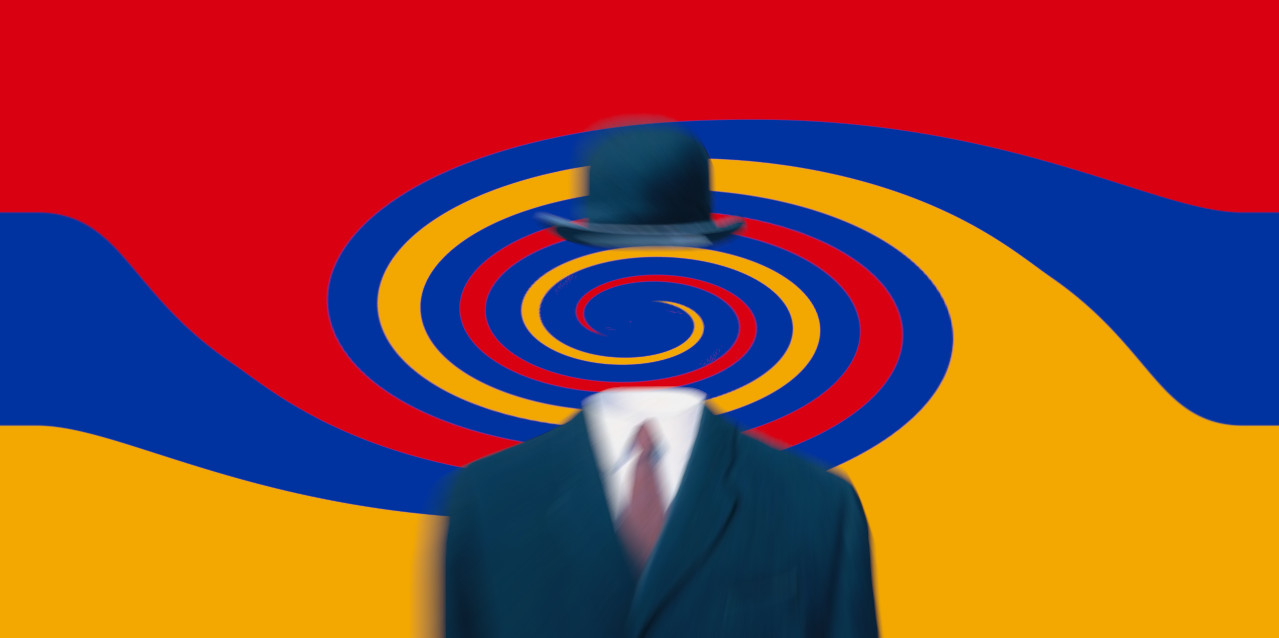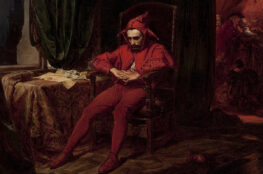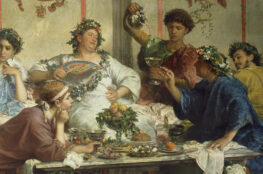When author Jack Antreassian, writing in the year before I was born, astutely observed that the image of Armenians in the U.S. was “a blur, and even the amorphous shape of the blur is without readily identifiable characteristics” (251), he attributed this to the following causes. Most Armenian Americans at that time were thrust there violently due to massacres and deportations at the hands of the Turks. They were few in number in a vast land, and they never fully invested in the new country because they were still psychologically tied to the old, even entertained hopes of one day returning. This one foot in/one foot out state was the cause of uncertainty and, as a result, like wet cement in a churning cement mixer, no identifiable form had yet to emerge. In short, he speculates that the shapeless blur was due to a lack of stability and continuity.
However, this was the same excuse the Father of Armenian History, Movses Khorenatsi, writing in the 5th century A.D. attests was used by his contemporaries as to why there was no early written Armenian history: “Because of the various wars that succeeded each other without pause” (69). But Khorenatsi rightly rejects this suggestion, writing that it is “not justified because there were indeed intervals between the wars” (ibid). Antreassian’s false explanation of his otherwise true observation must be rejected on similar grounds. Armenians in America had a long interval of peace and prosperity up until the time Antreassian wrote those words in which to allow a distinct form to appear. Forty years later, I’m almost forty years old and no such form has appeared or been close to appearing. But interval or no interval, what Antreassian seems not to have known is that Armenians everywhere and at every time have been an amorphous blur.
Antreassian’s accurate description of Armenians in the U.S. may as well have been a close paraphrase of what had been written about Armenians not in America, but in Armenia, and not in the late 20th century, but in the 1st century A.D. For it was already at this time that Tacitus, the greatest of the ancient Roman historians, wrote what I consider to be the single most important remark to be found in all of classical literature regarding Armenians. On the Armenians of 2000 years ago, he writes:
They have been an ambiguous race [ambigua gens] since ancient times, both in the character of the people and the geographical position of the country. It shares an extensive border with our own provinces and also stretches as far as Media Atropatene. [1] So it lies between the two great empires of Rome and Parthia, and is often at odds with them, since the Armenians hate Rome and are jealous of Parthia (2.56, adapted).
Therefore, the blurry, amorphous image of Armenians in the U.S. was not caused by their recent dispersion, rather Armenian ambiguity had existed from a very remote, perhaps prehistoric period.
In a certain sense, however, it’s not entirely wrong to attribute to instability and discontinuity as the twin forces which have made Armenia an amorphous blur, or in Tacitus’s formulation, an ambigua gens, just not to any recent instability or discontinuity. Just as it wasn’t any recent deprivation that led to Armenia’s obsession with food to the exclusion of higher pursuits (see the previous article “The Rule of Feasting“), Armenian ambiguity was not caused by the genocide of 1915-1923 and the subsequent dispersion. The temptation for individuals, and sometimes entire peoples, to blame relatively recent events for their essential nature is like children blaming their mother and father for how they turned out, which, if they were naturally inclined to philosophy, would instead point the finger at their grandparents, and in turn at their great grandparents, and so on to infinity. Or, if they were religious, point to what they imagine is the first man and then blame his crazy girlfriend who messed it all up for them, which is still better than blaming one’s poor parents.
It appears Armenians have been caught in a vortex of constant flux for such an exceedingly long period of time— according to Tacitus long before even the 1 century A.D.—that the only constant with regard to Armenians is inconstancy. When a nation is unsettled and unstable for 20, 50, or 100 years, the attitudes and psychology of a generation or two will be effected until circumstances allow for a correction, the way we see in America with each generation being distinguished by a name and thought to have unique attributes based on its circumstances. But for a single condition to prevail from generation to generation and millennia to millennia, in our case ambiguity, succeeding generations wouldn’t need to be named or distinguished because what has occurred is the breeding of a type in which qualities have been selected that are most suited to do one thing, i.e. navigating ambiguity. The result is a person of two minds.
Civil wars, which every country on earth has experienced from time to time, divide individuals against each other while still, however, leaving them individuals. But the ambiguity in which Armenians have lived for millennia has resulted in a different division, one which has divided individuals individually within themselves. This is almost certainly why Armenians don’t get along with fellow Armenians, because each contains a multitude in themselves. While individuals need each other and can find common ground with each other, crowds need nothing from other crowds, hence the parochial nature of groups of people, and hence the parochial nature of each Armenian on an individual basis, for whom the limits of their skin constitute the border of their own personal nation of which they are king, noble, soldier, and serf all in one. Hence Baronian’s joke, “How come our political parties are not divided into left and right like European nations? Because ours are all individually divided against each other.”
It’s clear from the juxtaposition of these two identical observations from widely differing times and places, one from Antreassian in the U.S. in 1981, the other by Tacitus of the Artaxata of the 1st century A.D., that there was not, is not, and unless something suddenly swerves from its fated course, there will never be an identifiable, defined Armenian ethic. My aim is not only to compose satire on the comings and goings of our people now scattered to the four corners of the earth, but also to clearly establish the precondition for satire, which is a well-founded ethics.
Footnotes
[1] Note that “Media Atropatene” is today’s entirely fictional Azerbaijan, forged by Georgian-born tyrant Stalin to placate Turkey. The name Azerbaijan is merely a variation of Atropatene, named for the Median general Atropates, and is essentially inhabited by the same old Iranian Medes, but who because they now speak a Turkic language, believe they are Turks. Hence their horror of DNA tests which they share with the other “Turks” of Asia Minor, since DNA tests go beyond the ephemeral words on their tongues to the mostly Mede blood in their mostly Mede bones. If that wasn’t bad enough, at the same time they try to erase the presence of Armenia, which though ambiguous from ancient times as Tacitus says, at least is an ambiguous historical reality. I have quoted Herodotus, Xenophon, Plutarch, and Tacitus on Armenia partly for this reason, that Armenia was in the mouths and manuscripts of these ancients, contrary to the fictions propagated by misled Medes and those who do their bidding for money.
References
Antreassian, Jack. “The Armenian in America: A Personal Perspective.” The Armenian Image in History and Literature, edited by Richard Hovanissian, Undena Publications, 1981, pp. 251-256.
Khorenatsi, Movses. History of the Armenians. Translated by Robert Thomson. Harvard University Press, 1978.
Tacitus, The Annals. Translated by Alfred John Church. Random House, 1942.
Tacitus, The Annals of Imperial Rome. Translated by Michael Grant. Penguin, 1956.
Tacitus, The Annals. Translated by A.J. Woodman. Hackett, 2004




